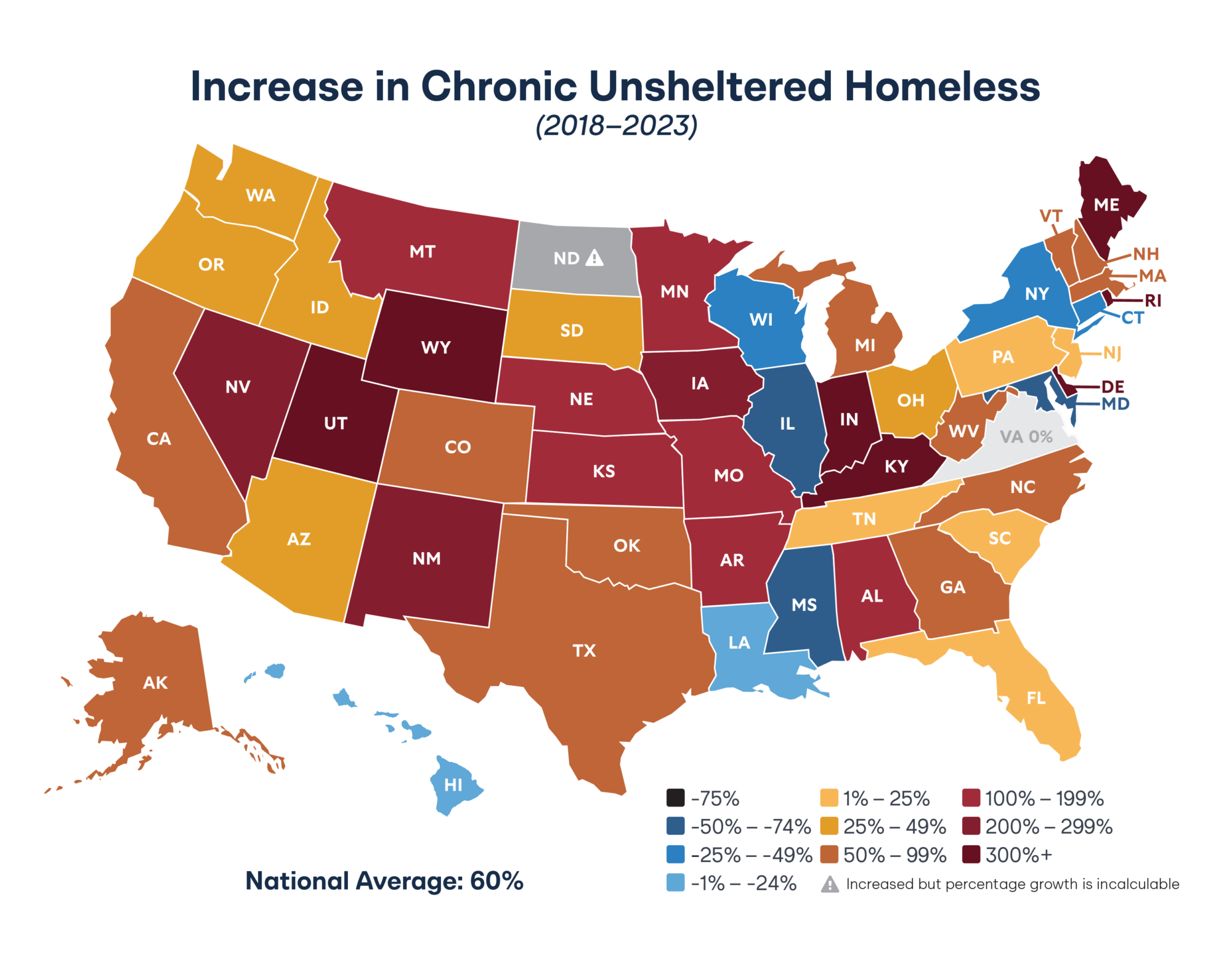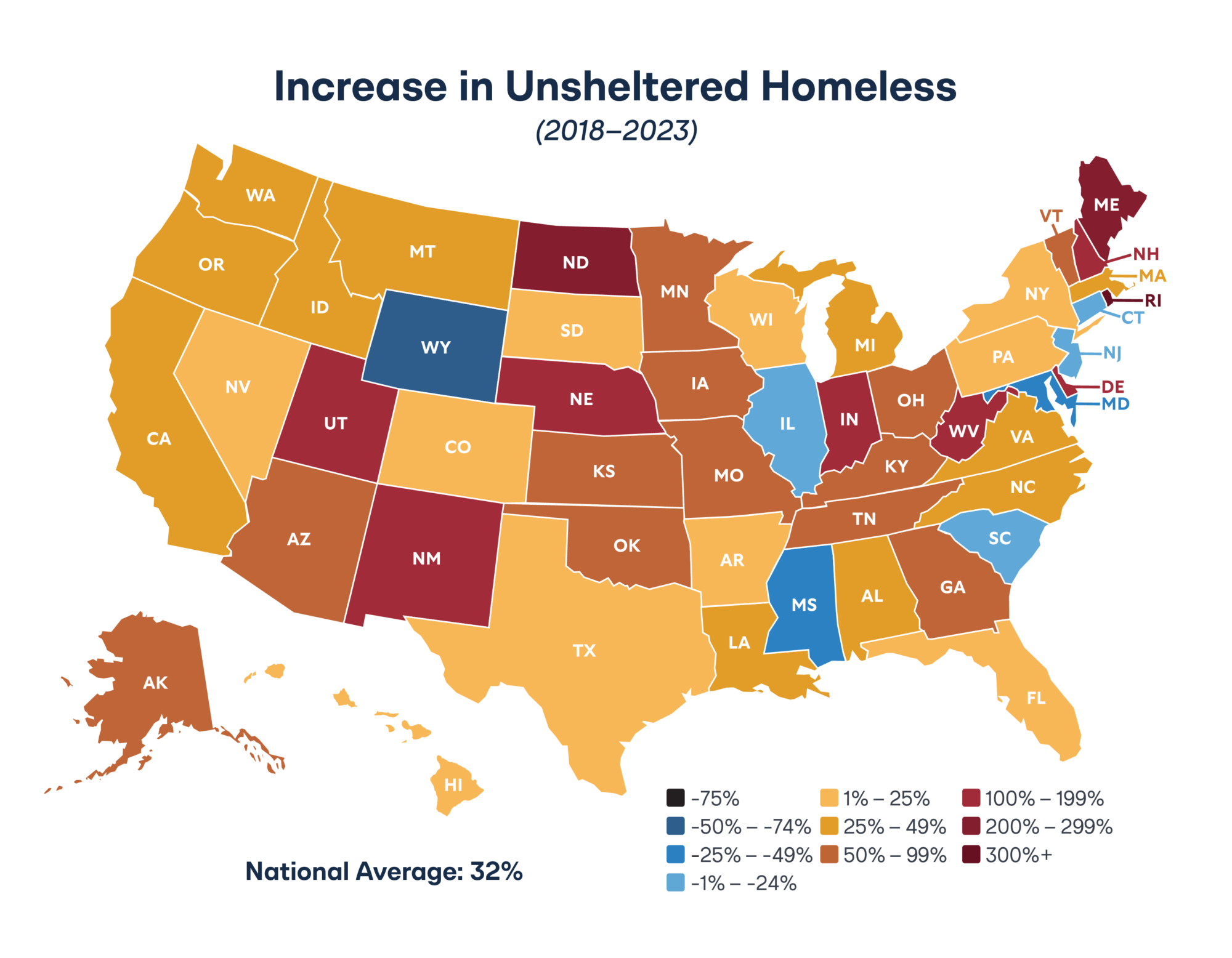
Offering Communities New Solutions to Homelessness
The U.S. federal government dominates the country’s response to homelessness through a set of policy mandates known as Housing First. These mandates prioritize housing interventions for homeless people with no strings attached—in other words, there is no expectation of or requirement for behavioral health or substance abuse treatment.
Decades of these top-down, one-size-fits-all policies have not only failed to help people get off the street, but there are now more people homeless and without any form of shelter than at any other point in the last 30 years.
Experimentation and locally tailored solutions are the best chance at finding solutions that work for individual communities—not carbon copying federal policies that have done little to improve the situation across America. At the Cicero Institute, we work to make it easier for communities to experiment with policies and strategies to respond to homelessness that fall outside of Housing First mandates.
Academics, policy advocates, and policymakers have long hailed Housing First as a panacea, repeating the intellectually arrogant refrain, “We know how to solve homelessness.” Yet, America’s once-great city centers are proof that the opposite is true. The federal government and much of the public has been deceived by idealistic policy frameworks and researchers who overextended the conclusions of a handful of small, questionably designed studies. Despite its good intentions, Housing First has failed as a policy framework for addressing homelessness in America.
According to the U.S. Department of Housing and Urban Development, America has more than doubled its supply of permanent supportive housing since 2013, the hallmark intervention of Housing First.1 In addition, the U.S. has added 144,000 new units of rapid rehousing and 122,000 units of other permanent housing options for homeless Americans.2 In that time, Housing First policies eliminated 120,000 units of transitional housing, which had been the main intervention prior to Housing First.3 Yet, the proportion of homeless Americans who are without shelter has grown by 18 percent, rising at nearly double the rate of homelessness in general.4
Unsheltered homelessness, which refers to homeless individuals living on the street in tents and sleeping bags, has exploded nationally, rising 30 percent in 10 years.5 This cohort is extremely vulnerable and is more likely to include homeless individuals with severe mental illness or substance abuse disorder. The proportion of homeless individuals with mental illness who are without shelter has increased by 19 percent, such that now nearly one in two of those individuals are unsheltered.6 For homeless people with substance abuse, that figure has increased by 51 percent, such that now 61 percent of them are without shelter.7 The trends in individual states are as much as two to five times higher in magnitude.
Over the last decade, federal homelessness policies have failed to stem the growing desperation among America’s homeless, and by most metrics, it appears only to have added to their suffering. The Cicero Institute is committed to offering communities and their leaders across America a different set of solutions that can positively transform the lives of the most vulnerable Americans who live on the street.



1 HUD Continuum of Care Homeless Assistance Programs Housing Inventory Count Report—All States. U.S. Department of Housing and Urban Development (2013, 2023).
2 HUD Continuum of Care Homeless Assistance Programs Housing Inventory Count Report—All States. U.S. Department of Housing and Urban Development (2013, 2023).
3 HUD Continuum of Care Homeless Assistance Programs Housing Inventory Count Report—All States. U.S. Department of Housing and Urban Development (2013, 2023).
4 HUD Continuum of Care Homeless Assistance Programs Homeless Populations and Subpopulations—All States. U.S. Department of Housing and Urban Development (2013, 2023).
5 HUD Continuum of Care Homeless Assistance Programs Homeless Populations and Subpopulations—All States. U.S. Department of Housing and Urban Development (2013, 2023).
6 HUD Continuum of Care Homeless Assistance Programs Homeless Populations and Subpopulations—All States. U.S. Department of Housing and Urban Development (2013, 2023).
7 HUD Continuum of Care Homeless Assistance Programs Homeless Populations and Subpopulations—All States. U.S. Department of Housing and Urban Development (2013, 2023).
